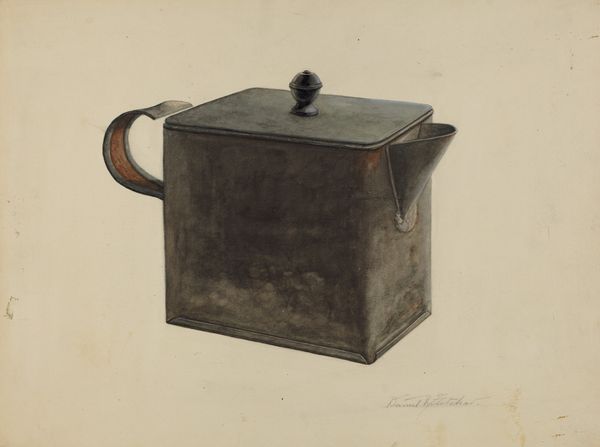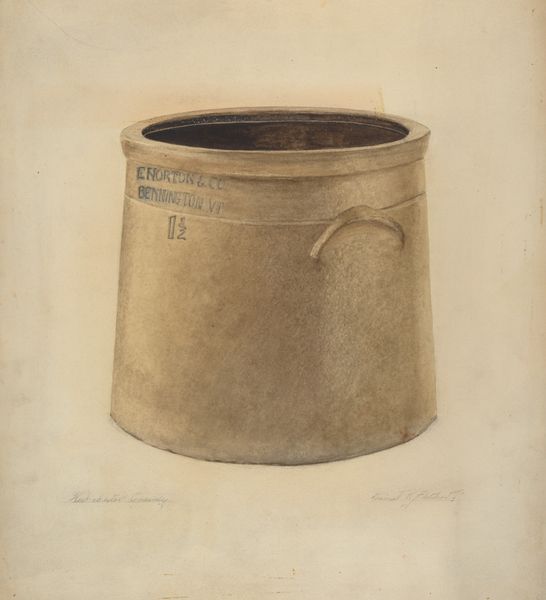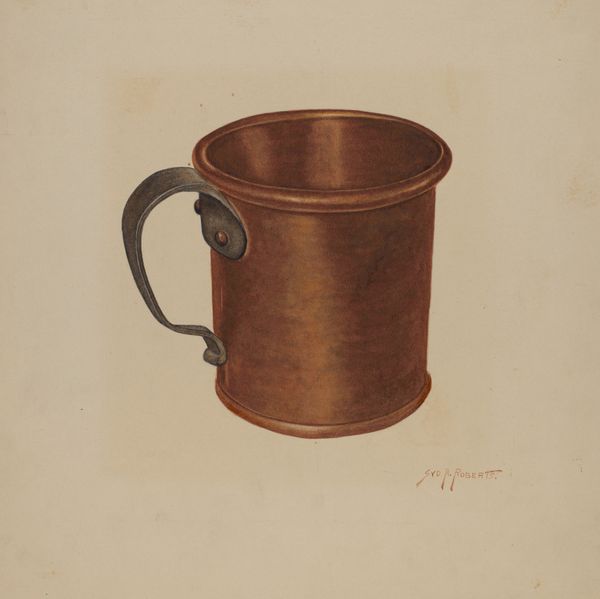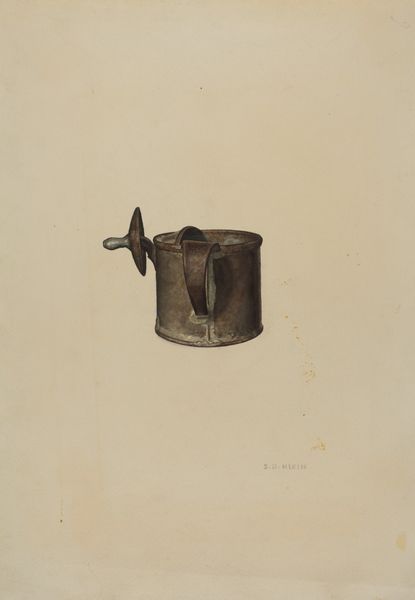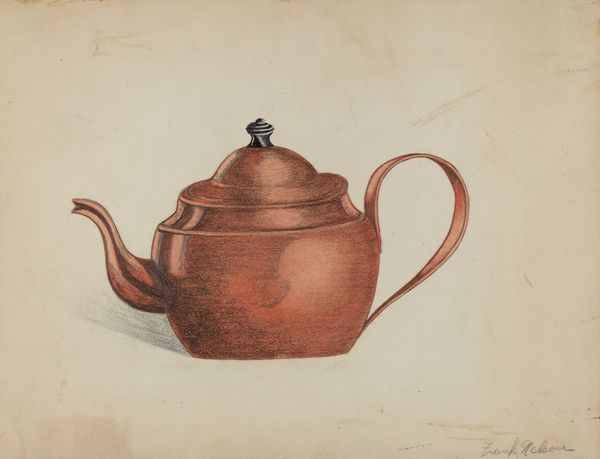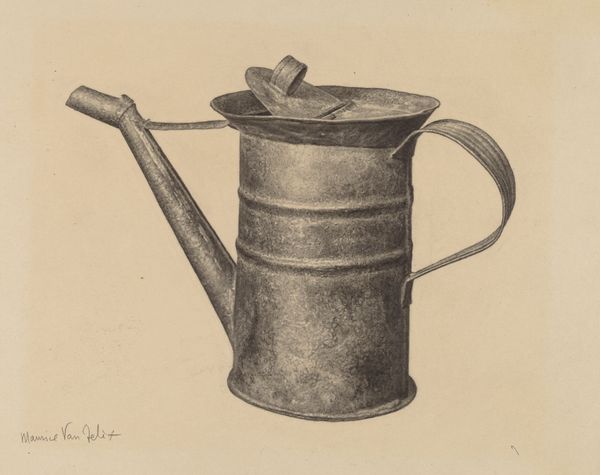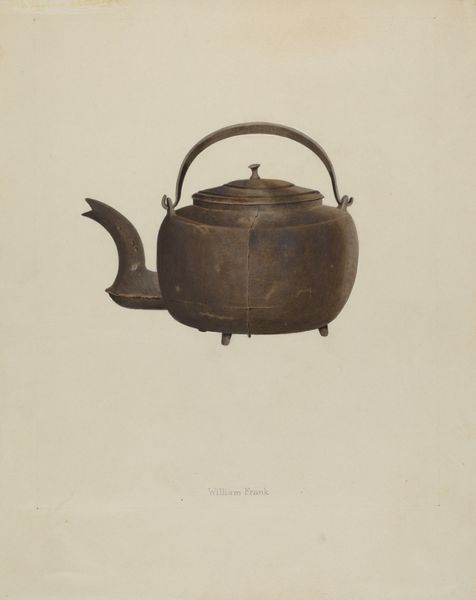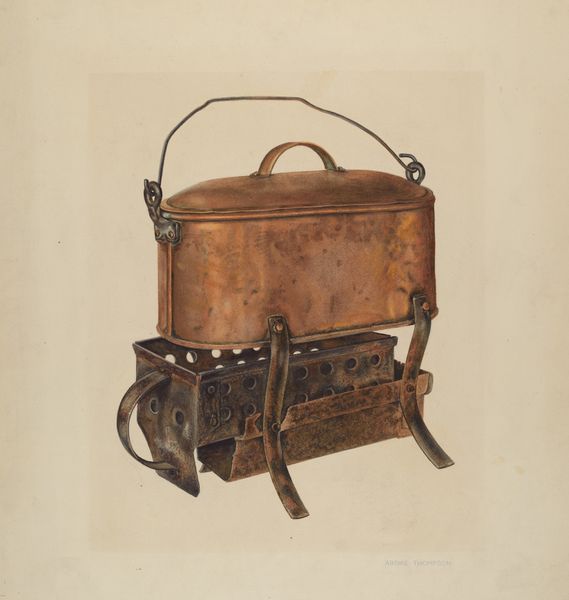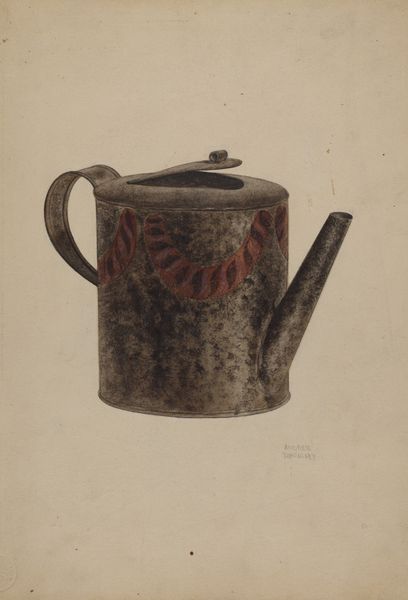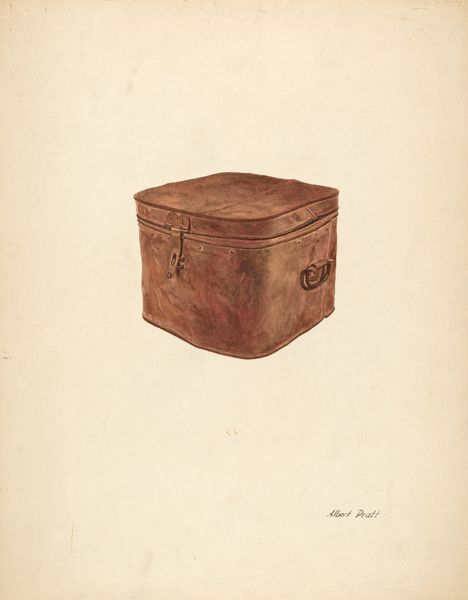
drawing
#
pencil drawn
#
drawing
#
aged paper
#
toned paper
#
light pencil work
#
pencil sketch
#
charcoal drawing
#
charcoal art
#
pencil drawing
#
underpainting
#
watercolor
Dimensions: overall: 24.6 x 35.4 cm (9 11/16 x 13 15/16 in.)
Copyright: National Gallery of Art: CC0 1.0
Curator: Well, this looks… utilitarian. Editor: It's "Teapot" by Daniel Fletcher, likely created between 1935 and 1942, a drawing executed with pencil on what appears to be aged paper. The effect of the light pencil work, combined with an underpainting wash creates something unexpectedly textural. Curator: Textural is generous. The severe geometry combined with a distinct lack of dynamism. What statement does it even make beyond mere representation? The object appears…heavy. Editor: Perhaps the heaviness reflects the socio-economic realities of the time. This was during the latter years of the Great Depression. A teapot, a simple domestic object, elevated to art during a period of widespread hardship. It subtly challenges what and who is worthy of representation. Curator: Hmm. I see what you are aiming at. The artist used structural elements with precise rendering. He captured form and material qualities such as weight, volume, and reflective light with remarkable detail, despite it being just pencil on paper. It invites deeper contemplation than its mere subject matter suggests. Editor: Precisely. Fletcher’s artistic choices also demonstrate a distinct focus on utility amidst scarcity. Teapots during this period could be symbolic communal and social stability within households, reinforcing resilience during an unstable socio-economic time. Curator: I confess that your sociohistorical frame grants this more layers than initially seemed present. It is difficult not to perceive additional meaning considering what you mentioned. Editor: Sometimes the seemingly simplest forms reveal the most compelling layers of meaning once situated within their specific moment. I see now how this teaport symbolizes survival against all odds.
Comments
No comments
Be the first to comment and join the conversation on the ultimate creative platform.
